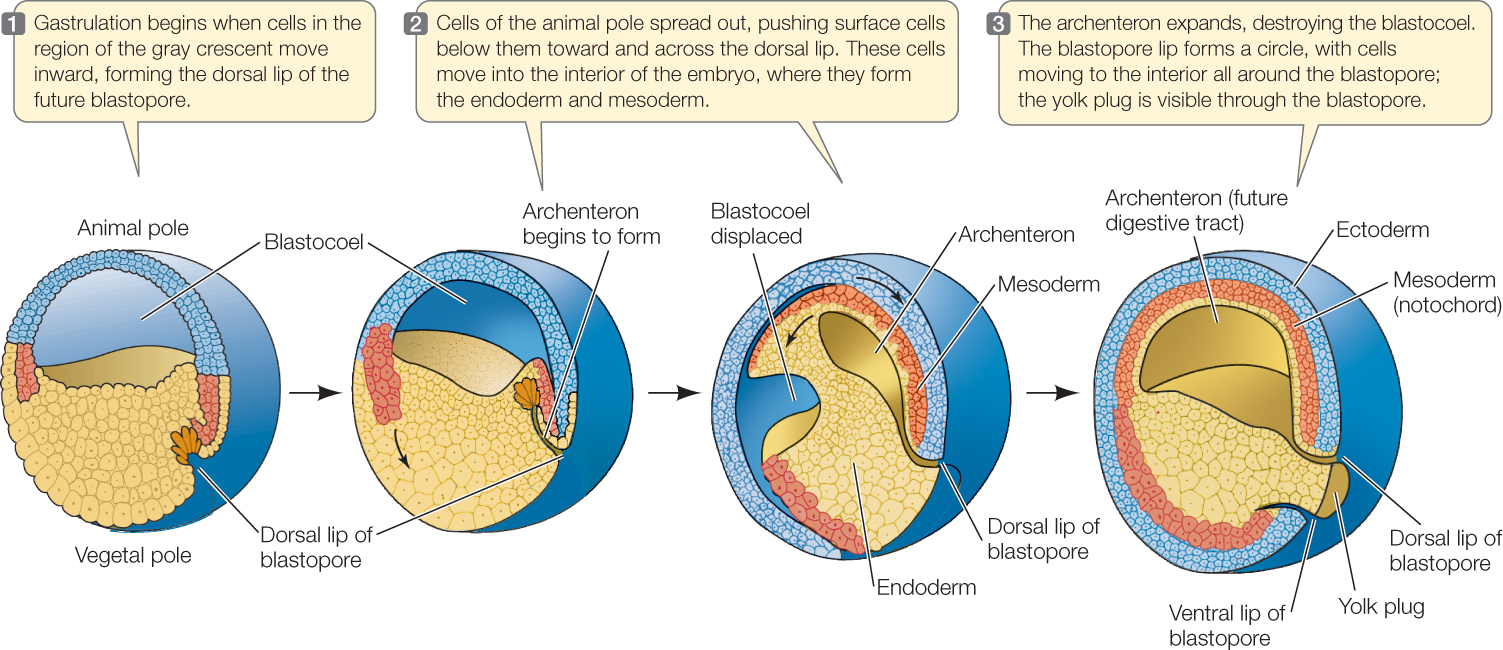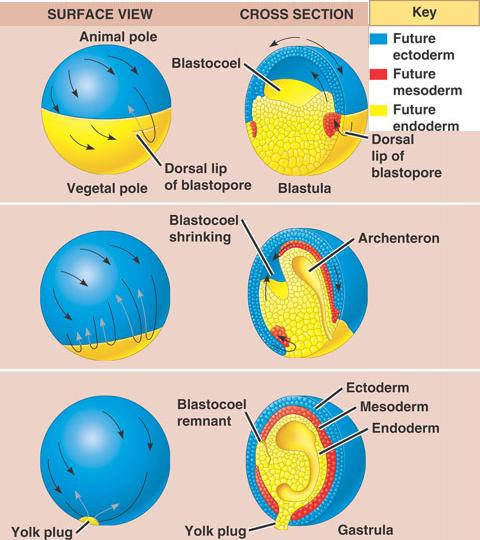
I won't ask many such difficult questions. Questions marked with a * are not easy, but you will gain a lot from thinking carefully about them. (There is quite a bit of redundancy in the questions below.) Teleost fish form their neural tube by cavitation, but other vertebrates form their neural tubes by folding. Reorientation of cells to form an epithelial sheet surrounding a water-filled cavity. As this slit elongates, its ends curve downward, and eventually meet each other, forming a circle ("yolk plug stage").Įpithelial fusion Some examples are the fusion of the archenteron with the stomodeum and the fusion of one neural fold with the other neural fold.Ĭavitation (of masses of mesenchymal cells, to form epithelial tubes, or sheets). The blastopore is a curved slit, when formed this way. Involution: A variation of invagination (in frog & salamander gastrulation) in which epithelial cells "roll" into the interior of the embryo. In bird, reptile & mammal embryos, gastrulation is by ingression instead of by invagination. Partly caused by weakening of cell-cell adhesion, and increased adhesion to extracellular fibers on the side of the epithelium toward which the cells move.įor example, the primary and secondary mesenchyme cells of sea urchin embryos are formed by ingression. Ingression: Movement of epithelial cells out of an epithelium, and change to becoming mesenchymal. In sea urchin gastrulas, it forms near the animal pole.

Stomodeum: A small invagination that becomes the mouth. In frog and salamander embryos, the blastopore forms below the equator, on the side of the embryo that will become the posterior. In sea urchin embryos, the blastopore forms at the vegetal pole. Human lungs form by invagination of part of the archenteron.Īrchenteron: The future digestive tract, formed during gastrulation.īlastopore: The opening into the archenteron. Sea urchin gastrulation occurs by invagination. (Caused by contraction of the concave ends of the cells & there are other theories) Invagination: folding inward of part of a epithelial sheet of cells Guess what is meant by "mid-gastrula" and "late-gastrula" stages. Not many cells have moved into the interior, yet. "Early gastrula": An embryo in which gastrulation has just begun. Gastrulation: Active movement of cells from the surface into the interior of a blastula. (Why not just call them early embryonic cells? It's traditional.)īlastula: A stage of development of a sea urchin or an amphibian in which a hollow cavity has formed inside the embryo (with no connection to the outside)īlastocoel: The hollow (water filled) cavity inside a blastula.īlastocyst: The hollow ball stage of a mammalian embryo. Vegetal pole: The side of an oocyte or early embryo 180 degrees opposite the animal pole.īlastomere: Any cell of a cleavage-stage or blastula-stage embryo It's the location of the polar bodies, and the oocyte nucleus.) Frog eggs rotate with animal pole upward.) I know people who think that yolk density and distribution is what defines the animal pole, but they are wrong. (In most species, yolk is less concentrated here. Polar bodies: Small cells formed on oocytes by the two meiotic divisions.Īnimal pole: The place on an embryo surface where the polar bodies formed.

Some special embryological words: Learn to talk like a pro.

Instead, the results support the hypothesis that RhoA serves as a trigger to initiate invagination, and once initiation occurs, RhoA activity is no longer involved in subsequent gastrulation movements.Review questions for the first hour exam : For every one of the photographs, drawings and diagrams on the lecture web pages, you ought to be able to write what it depicts, label the parts and explain their significance.įor example, can you identify and describe each of the drawings in this diagram? Although RhoA activity has been reported to control convergent extension movements in vertebrate embryos, experiments herein show that RhoA activity does not regulate convergent extension movements during sea urchin gastrulation. Inhibition of RhoA results in a failure to initiate invagination movements, while constitutively active RhoA induces precocious invagination of the archenteron, complete with the actin rearrangements and extracellular matrix secretions that normally accompany the onset of invagination. This study reports that RhoA is necessary to trigger archenteron invagination in the sea urchin embryo. How these events are coordinated remains unknown, although much has been learned from careful morphological examinations and molecular perturbations. During gastrulation, the archenteron is formed using cell shape changes, cell rearrangements, filopodial extensions, and convergent extension movements to elongate and shape the nascent gut tube.


 0 kommentar(er)
0 kommentar(er)
